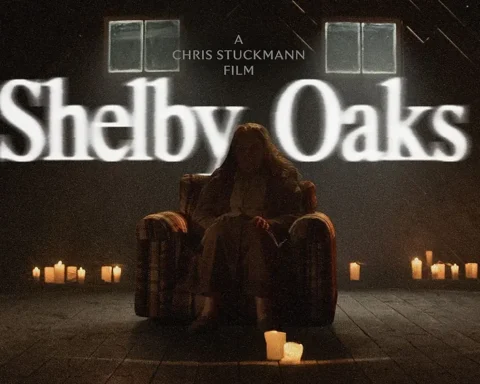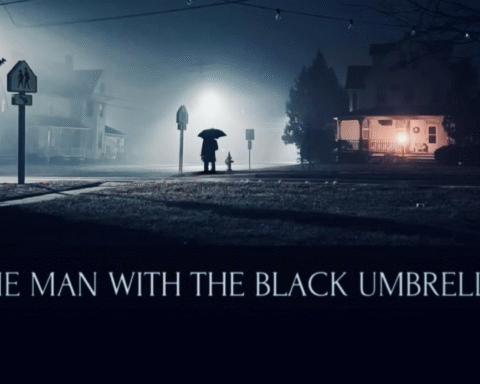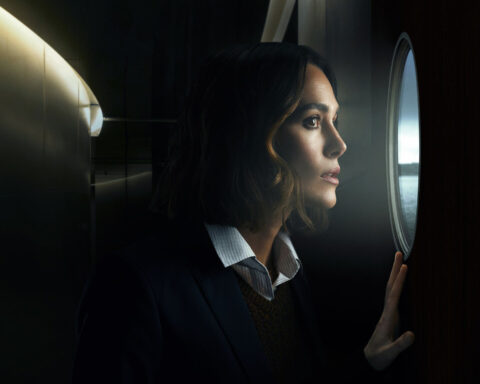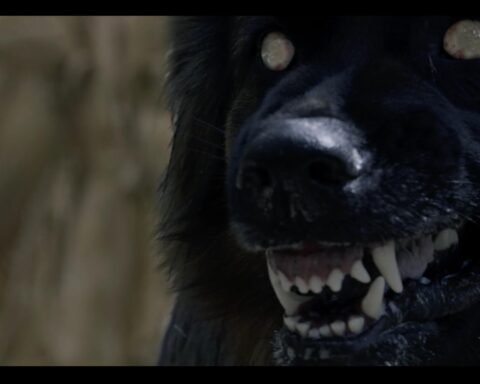Lesbian vampire characters have long captivated cinematic audiences, entwining themes of forbidden desire, subversion of patriarchal norms, and an exploration of identity. This study delves into the evolution of lesbian vampire archetypes from early cinema to contemporary films, analyzing their sociocultural implications, narrative functions, and aesthetic representations. By examining key films and their contextual backgrounds, this article seeks to illuminate the complex interplay between sexuality, power, and horror in the portrayal of lesbian vampires, ultimately revealing how these characters reflect and challenge societal attitudes towards gender and sexuality.
Cinema, as a reflection of societal mores and subconscious desires, has perpetually harbored the figure of the vampire—a creature oscillating between life and death, desire and destruction. Amongst the myriad representations of vampirism, the lesbian vampire holds a unique position, embodying a nexus of transgressive sexuality and subversive power. This article endeavors to dissect the evolution of lesbian vampire characters within the cinematic domain, tracing their metamorphosis across decades, and examining their significance within the broader tapestry of cultural narratives.
The Gothic Roots: Carmilla and the Advent of the Lesbian Vampire
1.1 The Literary Origins
The archetype of the lesbian vampire can be traced back to Sheridan Le Fanu’s novella Carmilla (1872), a cornerstone of vampire literature predating Bram Stoker’s Dracula by 25 years. Le Fanu’s Carmilla is a predatory yet seductive figure, whose relationships with her female victims blur the lines between friendship, desire, and domination. This literary genesis laid the groundwork for subsequent cinematic explorations, embedding within the lesbian vampire a rich tapestry of eroticism, fear, and the uncanny.
Le Fanu’s work was revolutionary in its portrayal of female-female relationships, which was a daring exploration of sexuality during the Victorian era. The character of Carmilla not only represented a departure from the traditional male vampire but also introduced an element of ambiguity and fluidity in sexual identities, foreshadowing later discussions on gender and sexuality in literature and film. The portrayal of Carmilla’s predatory nature intertwined with her genuine affection for her victims set a complex and often conflicting tone for future representations of lesbian vampires.
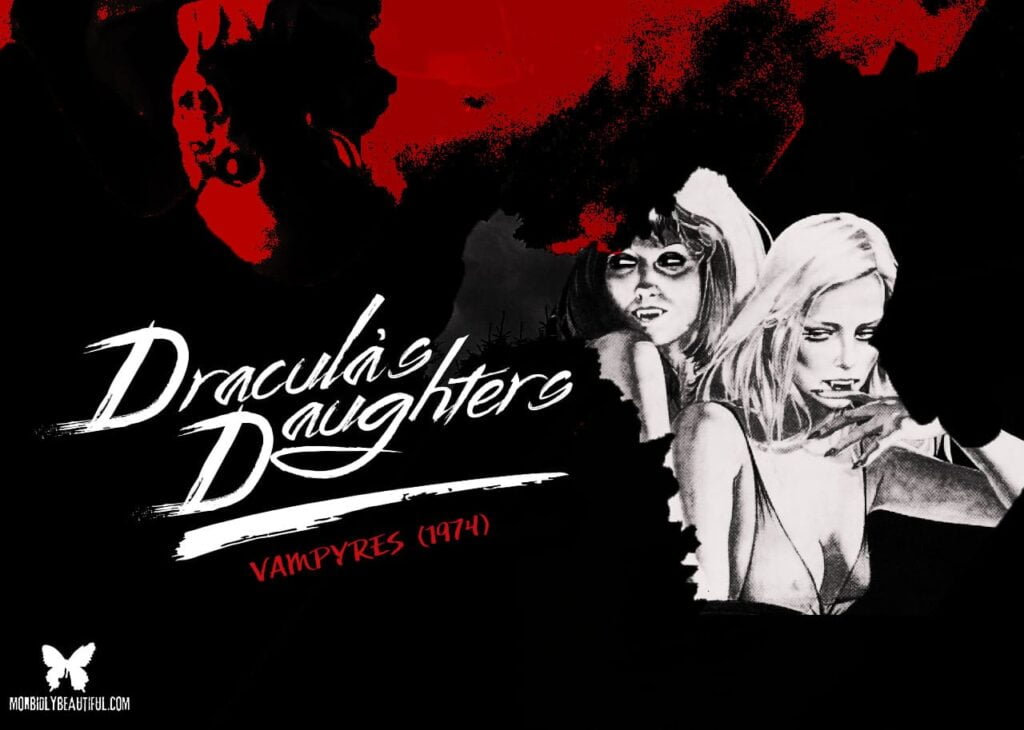


1.2 Early Cinematic Adaptations
The silent film era’s aesthetic leanings and limitations provided a fertile ground for the expression of vampirism’s visual and thematic elements. Films like Vampyr (1932), directed by Carl Theodor Dreyer, subtly hinted at homoerotic undertones. Dreyer’s film, with its eerie and atmospheric style, laid the foundation for the visual language of vampire cinema, emphasizing mood and symbolism over explicit content. The use of shadow and light, combined with the dreamlike narrative, created an otherworldly quality that would become a hallmark of vampire films.
However, it wasn’t until the mid-20th century that explicit portrayals of lesbian vampires began to emerge, most notably in Hammer Film Productions’ The Vampire Lovers (1970), a direct adaptation of Le Fanu’s Carmilla. Here, Ingrid Pitt’s portrayal of the titular character exudes a magnetic blend of sensuality and menace, solidifying the lesbian vampire’s place in cinematic history. Hammer Films’ approach combined gothic horror with eroticism, catering to both the burgeoning sexual liberation movements of the 1960s and the genre’s inherent appeal to taboo and transgression.

Eroticism and Exploitation: The Lesbian Vampire in 1970s Cinema
2.1 The Rise of Euro Horror
The 1970s witnessed an explosion of European horror films that unabashedly explored themes of sexuality and taboo. Directors like Jean Rollin and Jesús Franco spearheaded this movement, crafting films where lesbian vampires were both objects of desire and agents of dread. Rollin’s Le Frisson des Vampires (1971) and Franco’s Vampyros Lesbos (1971) epitomize this era’s blend of eroticism and horror, offering lush, dreamlike visuals interspersed with explicit depictions of lesbian desire.
Rollin, in particular, is renowned for his lyrical approach to horror, blending poetic imagery with explicit content. His films often feature ethereal, almost surreal landscapes, where the boundaries between the real and the fantastical blur. This dreamlike quality, combined with his portrayal of strong, sexually liberated women, positioned his work as both a celebration and critique of eroticism. Franco, on the other hand, was more exploitative in his approach, often using the lesbian vampire trope as a means to titillate rather than to explore deeper themes.
2.2 Feminist Readings and Critiques
While these films garnered attention for their provocative content, they also faced criticism for their often exploitative portrayal of lesbian relationships. Feminist scholars argue that these depictions, though groundbreaking in their visibility, were frequently framed through a male gaze that fetishized and objectified female sexuality. This dichotomy—between representation and exploitation—remains a contentious point in the analysis of lesbian vampire cinema.
Laura Mulvey’s seminal essay “Visual Pleasure and Narrative Cinema” (1975) introduced the concept of the male gaze, arguing that mainstream cinema is structured around a male spectator. Lesbian vampire films of the 1970s, with their overt eroticism, often exemplify this dynamic. The erotic scenes, while providing visibility to lesbian relationships, are frequently presented in a manner that caters to heterosexual male fantasies. This results in a paradox where the representation of queer desire is simultaneously progressive and regressive.

The Symbiotic Relationship: Power Dynamics and the Male Gaze
3.1 The Vampiric Power Play
At the heart of the lesbian vampire’s allure is the complex interplay of power dynamics. These characters often embody a potent blend of dominance and vulnerability, challenging traditional gender roles and the patriarchal structures that enforce them. Films like Tony Scott’s The Hunger (1983) present lesbian vampires not merely as predators but as tragic figures, whose immortality is both a gift and a curse.
The Hunger, starring Catherine Deneuve and Susan Sarandon, explores themes of love, addiction, and the passage of time. The film’s depiction of the vampire relationship is imbued with a sense of tragic beauty, presenting the vampire as a figure who is both empowered by her immortality and enslaved by her eternal loneliness. This duality allows for a more nuanced portrayal of the lesbian vampire, moving beyond simple predation to explore deeper emotional and existential themes.
3.2 Subverting the Male Gaze
The 1980s and 1990s saw a gradual shift in the portrayal of lesbian vampires, as filmmakers began to subvert the traditional male gaze. This era brought forth a more nuanced exploration of female desire and agency, with films like Daughters of Darkness (1971) and The Addiction (1995) offering complex, multi-dimensional portrayals of their lesbian vampire protagonists. By positioning these characters as subjects rather than objects, these films challenge the conventional cinematic gaze and invite audiences to engage with their stories on a deeper, more empathetic level.
Abel Ferrara’s The Addiction uses the vampire metaphor to explore addiction, morality, and redemption. The film’s protagonist, a philosophy student turned vampire, grapples with her new identity and the moral implications of her actions. This introspective approach contrasts sharply with earlier, more exploitative portrayals, positioning the vampire’s struggle as a broader commentary on human nature and societal corruption.
Contemporary Perspectives: Queer Theory and Intersectionality
4.1 The Influence of Queer Theory
The advent of queer theory in the late 20th century has profoundly influenced the interpretation of lesbian vampire films. Scholars such as Judith Butler and Eve Kosofsky Sedgwick have provided frameworks for understanding how these characters navigate the intersections of identity, desire, and power. Queer theory posits that the lesbian vampire’s transgression lies not merely in her sexuality but in her refusal to conform to normative societal roles.
Judith Butler’s concept of performativity, as outlined in Gender Trouble (1990), suggests that gender and sexuality are constructed through repeated performances rather than inherent traits. This framework allows for a re-examination of the lesbian vampire as a figure who disrupts traditional notions of gender and sexuality. By embodying both masculine and feminine traits, the lesbian vampire challenges binary understandings of identity and opens up a space for more fluid and dynamic representations.

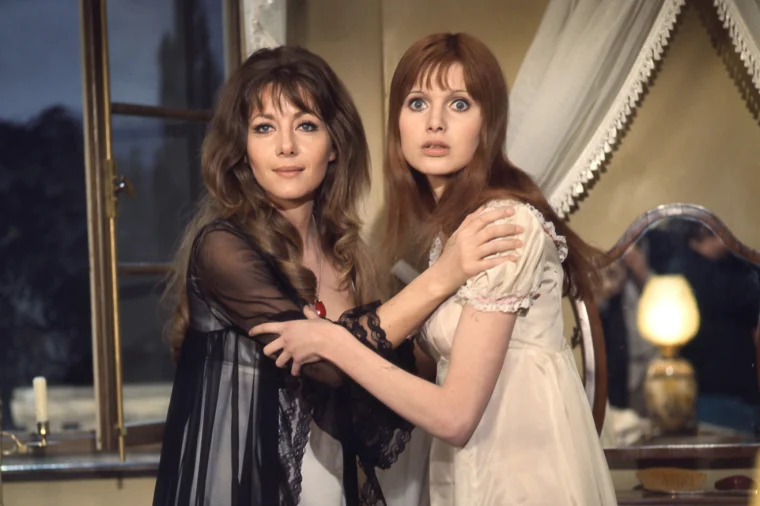
4.2 Intersectional Analysis
Intersectionality further enriches the discourse by examining how factors such as race, class, and nationality intersect with portrayals of lesbian vampires. Films like A Girl Walks Home Alone at Night (2014), directed by Ana Lily Amirpour, highlight the interplay of gender and cultural identity, presenting a vampire narrative that transcends traditional Western paradigms. This Iranian vampire film, with its feminist undertones and cross-cultural resonance, exemplifies the expanding horizons of the genre.
Amirpour’s film, often described as the first “Iranian vampire Western,” blends elements of horror, noir, and Western genres to create a unique and visually striking narrative. The film’s protagonist, a chador-clad vampire, subverts both Western and Iranian cultural expectations, using her vampiric powers to exact justice in a patriarchal society. This intersectional approach highlights the potential for vampire narratives to engage with complex social and cultural issues, offering a fresh perspective on the genre.
The Evolution of Aesthetic and Narrative Techniques
5.1 Visual and Cinematic Innovations
The depiction of lesbian vampires has evolved alongside advancements in cinematic technology and visual storytelling. The use of color, lighting, and mise-en-scène plays a crucial role in conveying the sensuality and otherworldliness of these characters. Directors like Guillermo del Toro, with films like Cronos (1993) and Crimson Peak (2015), employ Gothic aesthetics to craft visually stunning narratives that explore themes of love, loss, and the monstrous feminine.
Del Toro’s work is characterized by his meticulous attention to detail and his ability to blend horror with beauty. In Crimson Peak, the Gothic mansion becomes a character in its own right, with its decaying grandeur mirroring the internal decay of its inhabitants. The film’s use of color, particularly the contrast between the vibrant red of the clay and the cold blue of the snow, creates a visually arresting palette that enhances the film’s emotional and thematic depth.
5.2 Narrative Complexity
Contemporary films featuring lesbian vampires often eschew straightforward horror tropes in favor of more complex, layered narratives. Movies like The Moth Diaries (2011) and Byzantium (2012) delve into the psychological and emotional dimensions of their characters, offering nuanced explorations of trauma, identity, and the human condition. These films challenge viewers to look beyond the surface-level horror and engage with the deeper thematic currents at play.
Byzantium, directed by Neil Jordan, presents the story of two female vampires who have lived for centuries, exploring themes of survival, secrecy, and the passage of time. The film’s non-linear narrative structure and its focus on the characters’ backstories add depth to the vampire mythos, allowing for a richer and more engaging exploration of their experiences. This narrative complexity invites viewers to consider the broader implications of the vampire’s existence, moving beyond simple fear to a more profound reflection on life and death.

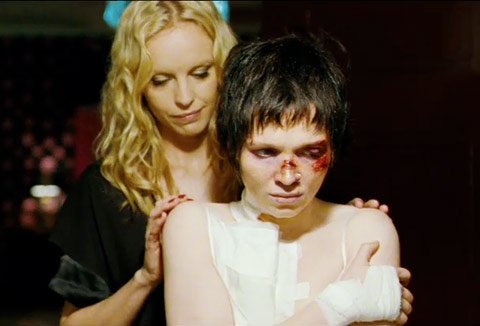


The Lesbian Vampire as a Cultural Mirror
6.1 Reflecting Societal Fears and Desires
The lesbian vampire, like all mythic figures, serves as a cultural mirror, reflecting society’s deepest fears and desires. Throughout cinematic history, these characters have embodied the anxieties surrounding female sexuality, autonomy, and transgression. In times of social upheaval or moral panic, the lesbian vampire often emerges as a symbol of the dangers posed by unchecked desire and the erosion of traditional values.
During the Cold War era, for example, the lesbian vampire can be seen as a metaphor for the perceived threat of communism, with its emphasis on collective over individual identity and its challenge to established social norms. The fear of infiltration and subversion, central to Cold War rhetoric, finds a parallel in the vampire’s ability to seduce and transform its victims, spreading its influence in secret.
6.2 The Subversive Potential of the Lesbian Vampire
At the same time, the lesbian vampire also holds the potential for subversion and liberation. By embodying a form of desire that defies patriarchal constraints, these characters can serve as powerful symbols of resistance and empowerment. Films that embrace this subversive potential often depict the lesbian vampire as a figure who challenges and disrupts the status quo, offering alternative visions of identity and desire.
In The Hunger, for instance, the relationship between the vampire Miriam and her human lover Sarah challenges traditional notions of gender and sexuality, presenting a vision of love and desire that transcends conventional boundaries. Similarly, A Girl Walks Home Alone at Night uses the vampire’s power to critique and subvert patriarchal oppression, positioning the female vampire as a force for justice and change.
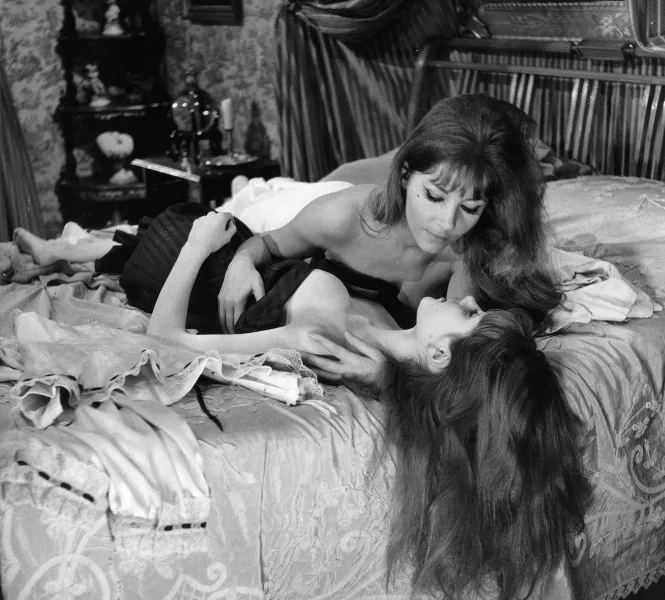
Case Studies: Key Films in Lesbian Vampire Cinema
7.1 The Vampire Lovers (1970)
The Vampire Lovers, directed by Roy Ward Baker and produced by Hammer Film Productions, is a seminal work in the history of lesbian vampire cinema. Based on Sheridan Le Fanu’s novella Carmilla, the film follows the story of a young woman who falls under the spell of the seductive vampire Carmilla. Ingrid Pitt’s portrayal of Carmilla is both alluring and menacing, capturing the character’s complex blend of desire and predation.
The film’s explicit depiction of lesbian desire was groundbreaking for its time, pushing the boundaries of what was acceptable in mainstream cinema. However, it also faced criticism for its exploitative elements, with some arguing that it reduced lesbian relationships to mere titillation. Despite these critiques, The Vampire Lovers remains a pivotal work, paving the way for future explorations of lesbian vampirism in film.
7.2 Daughters of Darkness (1971)
Directed by Harry Kümel, Daughters of Darkness is a visually stunning film that blends horror with eroticism and psychological drama. The film tells the story of a newlywed couple who encounter the mysterious Countess Bathory and her companion at a deserted seaside hotel. Delphine Seyrig’s portrayal of the Countess is mesmerizing, exuding a sense of both regal elegance and underlying menace.
Daughters of Darkness is notable for its sophisticated exploration of power dynamics and desire. The relationship between the Countess and her companion, while initially framed through a lens of dominance and submission, evolves into a more complex and reciprocal dynamic. The film’s lush cinematography and haunting score enhance its dreamlike quality, creating an atmosphere of both sensuality and dread.

7.3 The Hunger (1983)
Tony Scott’s The Hunger is a stylish and atmospheric film that explores themes of immortality, addiction, and love. The film stars Catherine Deneuve as the vampire Miriam, who seeks a new companion in Susan Sarandon’s character, Sarah. The film’s eroticism is balanced by its exploration of deeper emotional and existential themes, offering a nuanced portrayal of the vampire’s condition.
The Hunger is distinguished by its aesthetic sophistication and its subversion of traditional horror tropes. The film’s use of music, particularly the iconic opening sequence featuring Bauhaus’s “Bela Lugosi’s Dead,” sets the tone for its blend of gothic elegance and modern cool. The relationship between Miriam and Sarah is depicted with sensitivity and depth, challenging simplistic portrayals of lesbian desire.
7.4 A Girl Walks Home Alone at Night (2014)
Ana Lily Amirpour’s A Girl Walks Home Alone at Night is a groundbreaking film that combines elements of horror, noir, and Western genres. Set in the fictional Iranian ghost-town of Bad City, the film follows the story of a chador-clad vampire who preys on those who exploit and harm others. The film’s stark black-and-white cinematography and minimalist style create a haunting and evocative atmosphere.
The film’s protagonist, played by Sheila Vand, subverts traditional vampire and gender roles, using her powers to exact justice in a patriarchal society. The film’s feminist undertones and cross-cultural elements offer a fresh and innovative take on the vampire genre, highlighting the potential for vampire narratives to engage with contemporary social issues. Amirpour’s unique vision and storytelling approach have positioned A Girl Walks Home Alone at Night as a modern classic in the genre.
The Lesbian Vampire in Contemporary Popular Culture
8.1 Television and Streaming Platforms
In recent years, the rise of television and streaming platforms has provided new opportunities for the exploration of lesbian vampire narratives. Shows like True Blood (2008-2014) and Carmilla (2014-2016) have brought these characters to a wider audience, offering serialized storytelling that allows for more complex character development and thematic exploration.
True Blood, based on Charlaine Harris’s The Southern Vampire Mysteries series, features several prominent lesbian vampire characters, including Pam Swynford De Beaufort and Tara Thornton. The show’s blend of supernatural drama and social commentary provides a rich context for exploring issues of identity, desire, and power. The character of Pam, in particular, is notable for her wit, strength, and unapologetic embrace of her sexuality.
The web series Carmilla, inspired by Le Fanu’s novella, has gained a dedicated following for its modern and queer-positive take on the vampire mythos. The series follows the adventures of a university student who discovers that her roommate, Carmilla, is a vampire. The show’s focus on LGBTQ+ relationships and its playful, self-aware tone have resonated with contemporary audiences, highlighting the enduring appeal of the lesbian vampire archetype.
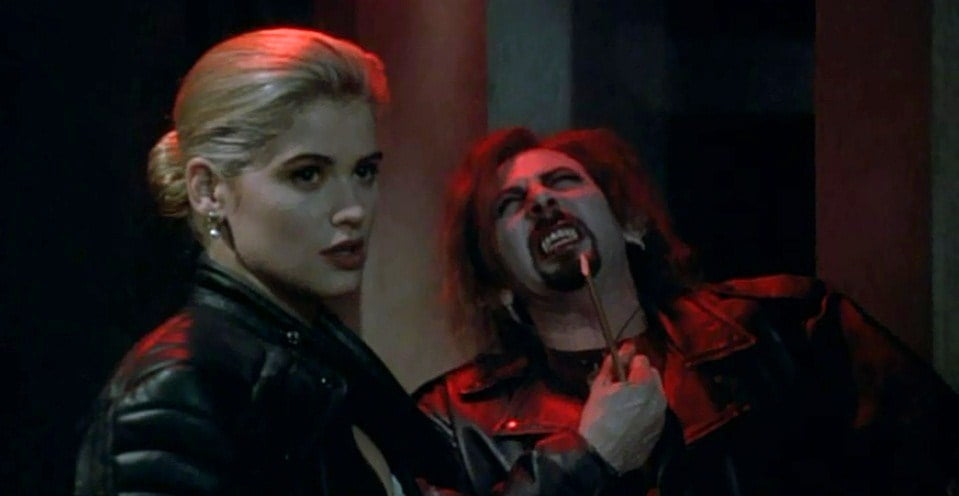
8.2 Literature and Graphic Novels
The lesbian vampire continues to be a prominent figure in contemporary literature and graphic novels. Works like Sarah Waters’s The Little Stranger (2009) and Marjorie Liu’s Monstress series blend horror with historical and fantasy elements, offering fresh and innovative takes on the vampire mythos.
Waters’s The Little Stranger is a gothic novel set in post-World War II England, where the supernatural and the psychological intertwine. While not explicitly focused on vampires, the novel’s exploration of haunted spaces and repressed desires aligns with the themes of lesbian vampirism. Waters’s nuanced and atmospheric writing captures the tension between the seen and the unseen, the spoken and the unspoken.
Liu’s Monstress series, a dark fantasy graphic novel, features a richly imagined world where humans and magical creatures coexist. The series’ protagonist, Maika Halfwolf, is a complex and multi-faceted character whose journey of self-discovery and vengeance is intertwined with themes of power, identity, and trauma. The series’ lush artwork and intricate storytelling offer a compelling and visually stunning exploration of the monstrous feminine.



A Reflection Made In Blood
The lesbian vampire remains a potent symbol within the cinematic lexicon, embodying a confluence of eroticism, power, and otherness. From the early literary influences of Carmilla to the modern, multifaceted portrayals in contemporary cinema, these characters have continually evolved, reflecting and challenging societal attitudes towards gender and sexuality. By examining the historical trajectory and cultural significance of lesbian vampire films, this article underscores the enduring allure and transformative potential of this enigmatic archetype.
The lesbian vampire in cinema is more than a mere figure of horror; she is a mirror reflecting society’s deepest anxieties and desires, a testament to the power of storytelling in navigating the complex terrain of human identity. And as cinema continues to evolve, so too will the portrayal of lesbian vampires, offering new insights and challenging preconceived notions in ways that are as timeless as they are groundbreaking.

